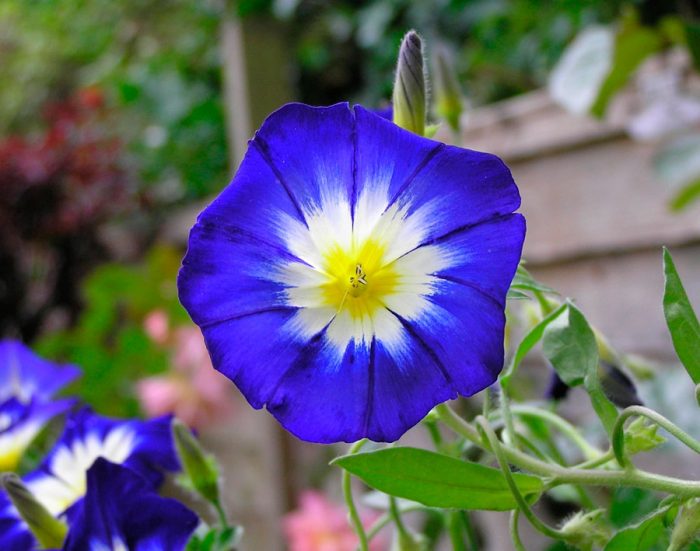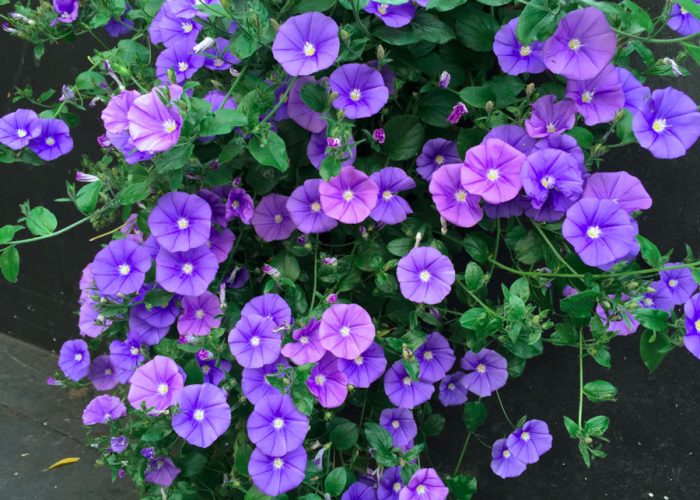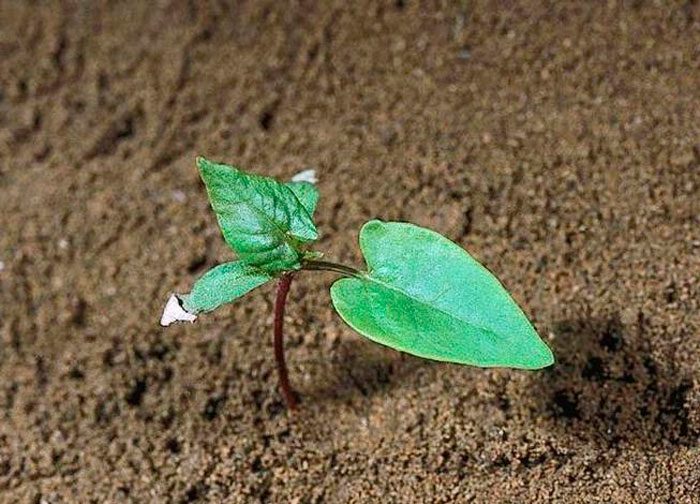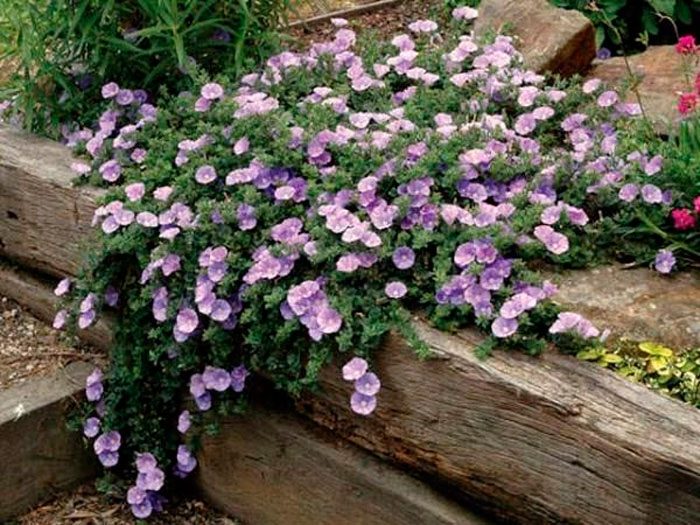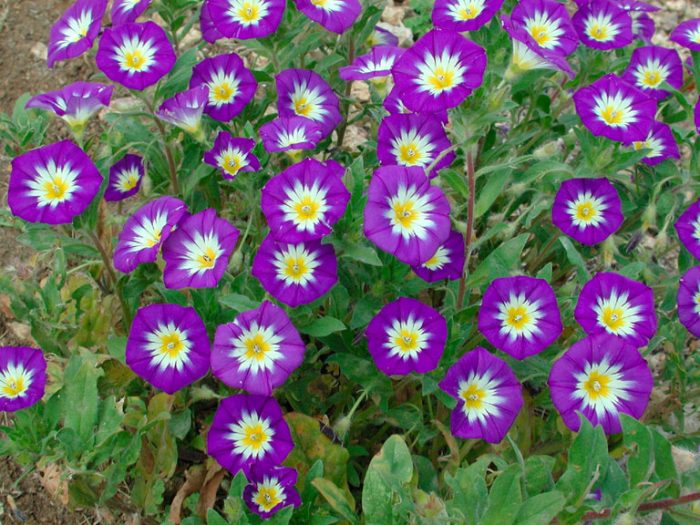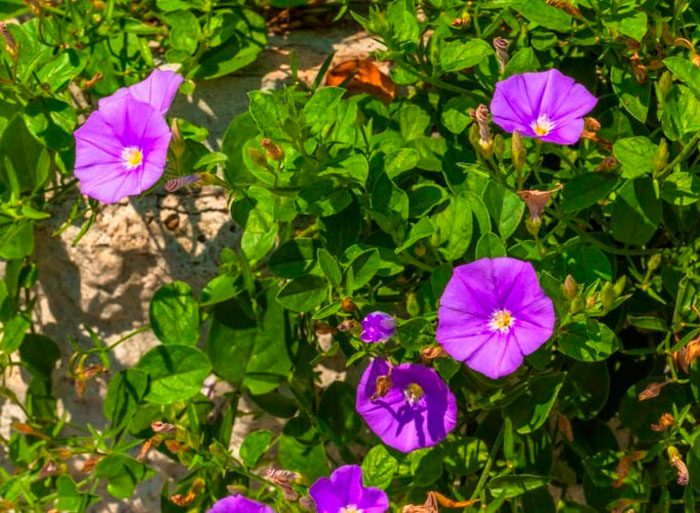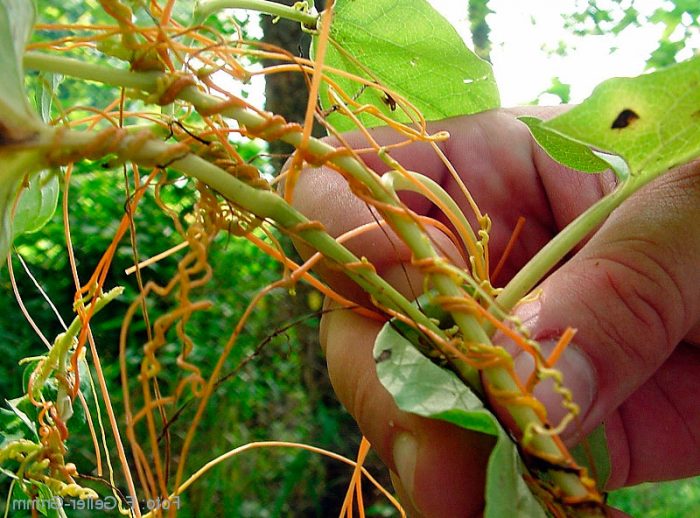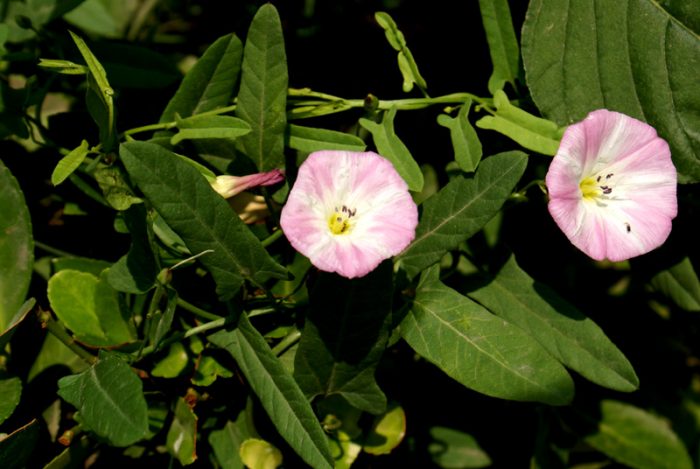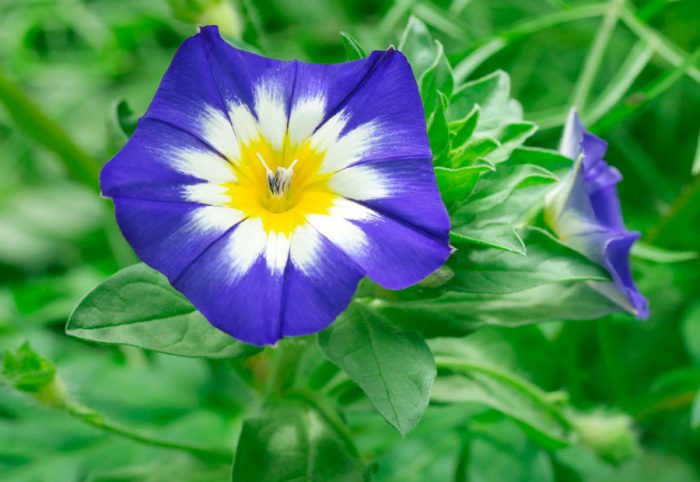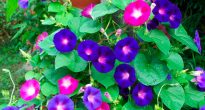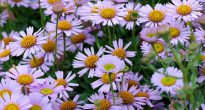The garden bindweed is a member of the genus Convolvulus of the Bindweed family. This genus includes about 250 species. Their characteristic feature is the shape of the flower. In nature, these plants can be found in regions with subtropical and temperate climates. The scientific name of this genus comes from the Latin verb, which means "fold". The fact is that most species need support, as which they use other plants, twisting shoots around them. The most common species of the genus Bindweed is the field bindweed - this weed causes a lot of trouble for gardeners, and it is also often found in fields with agricultural crops.
Content
Bindweed features
Bindweed has a wide variety of life forms. In natural conditions, one can meet bindweed, which are both perennials and annuals. They are semi-shrubs or herbaceous plants, their creeping or erect shoots reach 400 cm in length. Creeping rhizomes have filamentous roots. Alternate solid simple leaf plates have petioles. They have a heart-shaped or arrow-shaped shape, and can also be serrated or lobed. The opening of flowers is observed in the early morning. They are placed in the sinuses of 1, 3 pieces or inflorescences. The shape of the corolla is funnel-shaped or bell-shaped, while the blades are very slightly pronounced. The fruit is a box with seeds inside, they remain viable for 2 or 3 years.
Growing bindweed from seeds
The weed bindweed in the garden is a lot of trouble. But the decorative forms of the bindweed are a liana, characterized by rapid growth. Landscape designers often use such a plant because it has rich green foliage, flexible stems, and delicate and very beautiful flowers. Bindweed is able to decorate any vertical surface.
For reproduction of such a culture, only the generative (seed) method is used.If it is necessary that the object be masked with such a vine very quickly, then it is recommended to grow it through seedlings. Sowing seeds for seedlings is carried out in March, but before that, the seed should be immersed in water for 24 hours. They are sown in individual cups, which have holes for drainage, which will allow excess liquid to flow out. They should be filled with moistened compost soil or substrate, which includes nutrient soil and peat (2: 1). The decomposed seeds should be sprinkled on top with a layer of loose earth, which is tamped a little. Sowing in a common container is not recommended, since seedlings react extremely negatively to a pick. Cups are removed in a cool place (from 18 to 20 degrees). Crops are provided with systematic watering. With proper care, the first seedlings should appear after about half a month. Plants should be watered as the top layer of the substrate dries. 2 times a month, seedlings should be fed with a solution of mineral fertilizer in a weak concentration.


Watch this video on YouTube
Planting bindweed in the garden
What time to plant
After it becomes warm outside, and the spring return frosts are left behind, it will be possible to plant bindweed seedlings in open soil. However, before doing this, it must be hardened. As a rule, seedlings are planted in open soil in mid-May, but in some cases this has to be done only in the first decade of June.
A sunny area is best suited for planting bindweed. If such a plant gets sunlight, then it will bloom profusely and for a longer time. The soil must be permeable. In general, this culture does not impose special requirements on the composition of the soil, but it is better if it is loamy.
Landing features
First you need to start preparing the site. It is necessary to dig it up, while peat should be added to the soil (2-3 kilograms are taken per 1 square meter). Then the surface of the site must be leveled. Before planting, the seedlings should be watered abundantly, making it much easier to pull the plant out of the container. Prepare the holes, while the distance between them should be 20 to 25 centimeters. Bindweed is planted using the transshipment method. The planted plants need good watering.
Bindweed care
The most important thing in bindweed care is watering. It must be carried out systematically and in sufficient volume. For such a plant, both stagnation of water in the soil and its lack are harmful. If the plant does not have enough water, then it will start dropping the buds. If it rains relatively regularly in the summer, the bindweed can grow without additional watering. However, if the weather is hot or dry, then the liana must be watered, especially if you cultivate the ampelous Moorish species.
Basically, caring for such a plant is quite easy. The planted plants at first will need timely weeding, but after they get stronger, no weed can harm them. A bindweed, as a rule, needs a support, and it should be installed as early as possible. It is necessary to guide the vines along the support in time. In the event that the liana has grown excessively, then if necessary, you can make partial pruning, this will not harm the plant at all.
It is not necessary to remove wilting flowers and feed the bindweed. However, if the growth of the vine is very slow or the flowering is poor, it will need feeding. To do this, use a nutrient solution consisting of 1 bucket of water, 1 large spoonful of Nitrophoska and the same amount of Agricola for flowering plants. For 1 square meter of the site, 2.5 to 3 liters of such a nutrient solution are taken. You can also sprinkle the surface of the soil around the bushes with a layer of wood ash.
Diseases and pests
The bindweed is highly resistant to diseases and pests. Rarely, a liana can be affected by powdery mildew. To combat it, fungicides are used, for example, Bordeaux liquid. If aphids have settled on the bushes, then they should be sprayed with a solution of acaricide: Antitlin, Aktellik or Aktara.
After flowering
Typically, this crop is grown as an annual. But if you decide to save the bindweed, then it must be removed from the ground and planted in a pot. The container with the plant is removed to a well-lit room, in which the air temperature in winter does not drop below zero degrees. In springtime, the bindweed is again transplanted into open soil. However, it should be noted that this flower reproduces well by self-sowing. Therefore, where it was grown last year, friendly shoots may appear in spring, which will only need to be thinned out or planted.
How to get rid of bindweed
Bindweed, which is a weed, annoys gardeners quite strongly. This perennial plant is distinguished by the fact that it is very hardy and tenacious. Twisting around other plants, the bindweed simply "strangles" them. In this regard, if such a field bindweed was seen on your site, then the fight against it should be started as soon as possible. To do this, take a rake and try to extract all its roots from the soil. But if scraps of roots remain in the ground, then the bindweed will begin to spread at a rapid speed throughout your garden or garden. In this case, it is recommended to use herbicides to combat it, for example: Roundup, Tornado or Lintur. The drug should be applied pointwise, and several treatments will be required.
If the site is completely filled with bindweed, then at the very beginning of spring, it should be completely dug up and with the help of a rake try to select most of the roots. Then the surface of the site must be covered with a dark-colored material that should not transmit light (black film or roofing material). In the absence of light and oxygen, as well as with a strong increase in temperature, almost all bindweed should die. But in order to eradicate this weed completely, in the current season only white mustard should be planted on the treated area. You can also sow bluegrass or fescue. If such a weed was noticed in an already planted garden, then it will have to be pulled out every day. In this case, shoots and roots, together with seeds, must be destroyed. It is recommended to apply herbicides after harvest or pointwise. In the autumn, the site will require deep digging, while all the roots of this weed should be pulled out of the ground and destroyed. They should not be placed in compost, as there is a high probability that they will germinate again.


Watch this video on YouTube
Types and varieties of bindweed with photos and names
There are few types of garden bindweed. The ones that are most popular will be described below.
Bindweed Moorish (Convolvulus sabatius = Convolvulus Mauritanicus)
This ornamental plant is usually grown in containers or hanging baskets. The length of the stems is about half a meter, they are covered with delicate leaf plates of a greenish-gray color. As a rule, the flowers of this species have a pale lilac color.
Bindweed (Convolvulus bicuspidatus = Convolvulus fischerianus)
The homeland of this bindweed is Siberia, Asia and the Caucasus. It prefers to grow along sandy river banks, on dry mountain slopes, as well as in mountain steppes. The length of slightly curly recumbent, ascending shoots varies from 0.3 to 0.4 m. The arrow-shaped leaf plates can be pubescent or naked, the length of their petioles is from 30 to 70 mm. Single pink flowers flaunt on long peduncles.
Bindweed tricolor (Convolvulus tricolor = Convolvulus minor)
This densely branched herb is an annual and native to the western Mediterranean.There is pubescence on the surface of the ascending creeping shoots. Sessile, entire, linear-lanceolate leaf plates are pointed, greenish, slightly rough or glabrous. Axillary flowers reach about 40 mm in diameter, their shape is correct funnel-shaped, and the pedicels are short. Their throat is yellow, the middle part has a white color, and the limb of the corolla is deep blue. This species has several forms with pink, purple, blue-purple, white or blue flowers. There are also several varieties:
- Crimson Monarch - the color of the flowers is crimson;
- Royal Ensign - the length of the stems is about 0.45 m, in dark blue flowers the throat is golden;
- Blue Flash - bush height about 0.25 m, blue flowers.
Star bindweed, also called morning glory Mina Lobata, or the Spanish flag, or lobed kvamoklit is a vine, but it is not a bindweed.

